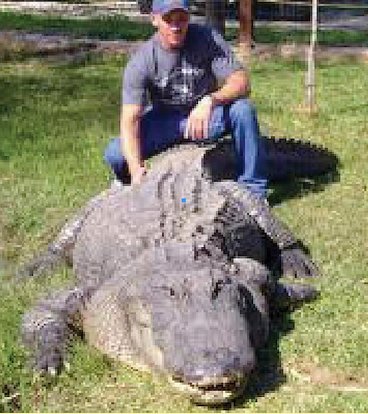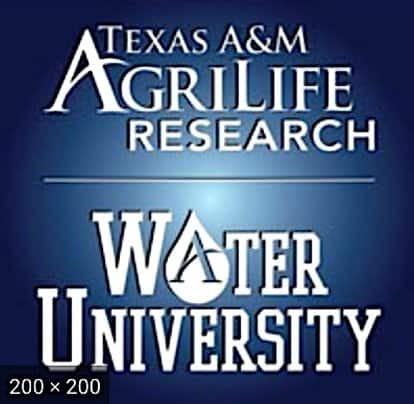

FROM FLOWERS IGNORE AL’S BAD NEWS … TO ORCHIDS IN SPOTLIGHT!
Though cloudy skies, and northern blasts, Retard the gentle spring awhile; The sun will conqu’ror prove at last, And nature wear a vernal smile. “Waiting for Spring” by John Newton, New Zealand poet
BY BRENDA BEUST SMITH
DRAT!!! Unfortunately both Big Al and the marmot up north were right on target, as this week has proven! Big Al, our famed record-holding Texas weather prognosticater alligator and Punxsutawney Phil “predicted” — on Groundhog Day (Feb. 2) — Spring is NOT right around the corner. Phil “forecasted” below-average temperatures for the next six weeks. But he has only a has only a 40+/-% accuracy record. We reserve judgement until Big Al (100% accuracy!) cast his vote. As a Gator Country spokesman put it: “AL didn’t even surface to say hi,” when his favorite KFC meal was tossed in!

(Note: alligators genetically cannot eat at all until spring has arrived!) Still, many great landscape plants have been in bloom for weeks now to bridge the gap until plentiful spring color appears. Witness these reader reports:
IN COMING WEEKS I WILL share the great early-blooming TOTALLY UNPROTECTED (except by natural mulch) plants recommended by readers. One I’m definitely going to try is Japanese quince (Chaenomeles japonica), recommended by both RAMONA RIDGE and MARGARET CHERRY. Ramona in Fulshear says her 5+/- year old plant is totally no care, no irrigation, no fertilizer, etc. Neighbors have ones 20+ years old. Margaret wrote her quince has been “…in bloom since November. This picture was taken less than 3 weeks after the freeze. It’ll continue to bloom on and off until April or May. This is the old Texas Scarlet variety but there are many new ones on the market.”
POTPOURRI PREPARE YOURSELF for a WOW! of a Spotlight Article. Orchids have that affect on most folks. Noted grower Stephen Moffitt makes adding these exotic plants to your landscaping (that’s right, outdoors!) easy and inviting. The SAT., MAR. 4: HOUSTON ORCHID SOCIETY SHOW & SALE, 10am-5pm, Sun 11am-4pm, Memorial City Mall will attract an international crowd. houstonorchidsociety.org/event/2023-spring-show-saturday/ WANT TO LEARN MORE ABOUT OUR BEST TREES TO PLANT? Houston Parks Board has set up numerous tree plantings across the area that need volunteers. Check out those close to you. Invaluable learning experiences, especially for kids. houstonparksboard.volunteerhub.com/vv2/ * * * Brenda Beust Smith’s column in the LAZY GARDENER & FRIENDS HOUSTON GARDEN NEWSLETTER is based on her 40+ years as Houston Chronicle’s Lazy Gar,dener Email: lazygardenerbrenda@gmail.com

WANT AN ORCHID ADVENTURE? BRANCH OUT WITH CATASETINAE
By HOUSTON ORCHID SOCIETY houstonorchidsociety.org
STEPHEN MOFFITT of Houston Orchid Society, recommends Catasetinae if you want to branch out beyond the grocery store Phalaenopsis. Orchids in this alliance are easy to grow and bloom readily once you understand their cultural needs. With lots of water, they explode with new growth during the spring and summer growing season. Most blossoms have a pleasant spicy or citrus fragrance. They go dormant during the winter when they are kept dry. Catasetinae can be grown easily without having to be in a greenhouse, and they grow in just about every kind of medium. Stephen grows in clay pots with a mix of sphagnum moss and charcoal or large sponge rock. He sprinkles on some time-release fertilizer and tops with a thin layer of sphagnum to keep the fertilizer from splashing out when watering. Stephen grows all his plants outside under a shade house covered with 60% shade cloth, then brings them inside when the weather turns cold and they go into dormancy. In the spring Catasetinae send up a new growth and start the growth cycle over again. This is a good time to repot by removing the plant from the pot and cutting off most of the old dead roots, leaving just enough to stabilize the plant. Stephen repots the plant slightly below the top of the previous year’s growth in the center of the pot. He moves the plant to a warm growing area with moderate light, but he says, “DO NOT WATER AT THIS TIME!” Wait until the new growth opens up and the new roots are at least four inches long. Only then do you start to water and feed the plant. Around mid-October, Stephen brings the plants inside, as most begin to develop yellow leaves that will eventually drop. He stops watering, even if they are blooming for the second or third time. Temps below 55°F are a no-no, but a windowsill or somewhere without water or high sunlight is best for dormant Catasetinae. These are truly rewarding orchids and perfect for the local climate. * * * EDITOR’S NOTE: Learn more at: SAT., MAR. 4: HOUSTON ORCHID SOCIETY SHOW & SALE, 10am-5pm, Sun 11am-4pm, Memorial City Mall, I- 10@Gessner. houstonorchidsociety.org/event/2023-spring-show-saturday/ * * *


BOOK REVIEW
I finished reading a book this week titled: The Ecology of Care – Medicine, Agriculture, Money, and the Quiet Power of Human and Microbial Communities by Didi Pershouse, Mycelium Books, 2016, ISBN: 978-0692613030 This is a book about hope and a way to heal from all the problems we face in society today. She links many examples in nature of how communities work together from microbes in the soil or our guts to neighbors helping neighbors. She links many of the problems in society today to us as a people of taking care of the environment and not looking at the whole earth system. Her theme is that by working together each in our own yards and areas of influence we can begin to solve societies problems. She uses numerous examples of how she healed people when modern medicine failed to by using integrative techniques from multiple medical approaches. From the cover: Didi Pershouse is an author, educator, and soil sponge strategist committed to building healthy communities both above and below ground. Based in Vermont, she is the founder of the Land and Leadership Initiative. I’m growing a community of people who are committed to developing our capacity to serve as resources forliving systems: human communities, ecosystems, economies. She is also the founder of the Center for Sustainable Medicine and has developed a practice and theoretical framework for systems-based ecological medicine—restoring health to people as well as the social and ecological systems around them. In her work she connects the dots between soil health and public health, and the role of beneficial microorganisms in maintaining a healthy climate both inside and outside the body. What can Cuban doctors, innovative ranchers in Saskatchewan, and the microbiome teach us about how to care for people and the Earth at the same time? In this richly layered book, Didi Pershouse takes us on a fast-moving, sharpwitted journey through her own life: from growing up with the neurosurgeon who accidentally discovered the seat of memory in the brain, to working in a smoke-filled office at New York magazine, to her career as an innovative acupuncturist in Vermont, and on to a passion for close-knit communities, grazing cows, and soil restoration as solutions to much of what ails us. Along the way, she unfolds a surprising new take on the story of our time: how the germ theory of disease joined with a profit-based economy, and unwittingly led to a “sterilization” of medicine, agriculture, and even our social lives. This 150-year detour has brought about the near destruction of our climate as well as a great forgetting of the power of connection. By documenting a scientific understanding of the intelligence of the whole, Pershouse nudges us awake with a hopeful view and shows us how to reclaim the rich, “fertile” lives we are meant for. * * *


If we inspire you to attend any of these, please let them know you heard about it in . . . THE LAZY GARDENER & FRIENDS NEWSLETTER! & please patronize our Newsletter & Calendar sponsors below!
SPONSORSHIP
If you are interested in becoming a sponsor, please contact us at 936-273-1200 or send an e-mail to: lazygardenerandfriends@gmail.com

ABOUT US
BRENDA BEUST SMITH WE KNOW HER BEST AS THE LAZY GARDENER . . . but Brenda Beust Smith is also:
- a national award-winning writer & editor
- a nationally-published writer & photographer
- a national horticultural speaker
- a former Houston Chronicle reporter
When the Chronicle discontinued Brenda’s 45-year-old Lazy Gardener” print column — started in the early ’70s as a fun side-project to reporting, it then ranked as the longestrunning, continuously-published local newspaper column in the Greater Houston area. The name, she says, is not just fun, it’s true. Brenda’s gradual sideways step from reporter into gardening writing led first to an 18-year series of when-to-do-what Lazy Gardener Calendars, then to her Lazy Gardener’s Guide book which morphed into her Lazy Gardener’s Guide on CD, which she now emails free upon request. Brenda became a Harris County Master Gardener and, over the years, served on theboards of many Greater Houston area horticulture organizations. She hosted local radio and TV shows, most notably a 10+-year Lazy Gardener specialty shows on HoustonPBS (Ch. 8) and her call-in “EcoGardening” show on KPFT-FM. For over three decades, Brenda served as Assistant Production Manager of the GARDEN CLUB OF AMERICA’S “BULLETIN” magazine. Although still an active broad-based freelance writer, Brenda’s main focus now is THE LAZY GARDENER & FRIENDS HOUSTON GARDEN NEWSLETTER with John Ferguson and Pablo Hernandez of Nature’s Way Resources. A native of New Orleans and graduate of St. Agnes Academy and the University of Houston, Brenda lives in Humble, TX, and is married to the retired Aldine High School Coach Bill Smith. They have one son, Blake. Regarding this newsletter, Brenda is the lead writer, originator of it and the daily inspiration for it. We so appreciate the way she has made gardening such a fun way to celebrate life together for such a long time.
JOHN FERGUSON John is a native Houstonian and has over 27 years of business experience. He owns Nature’s Way Resources, a composting company that specializes in high quality compost, mulch, and soil mixes. He holds a MS degree in Physics and Geology and is a licensed Soil Scientist in Texas. John has won many awards in horticulture and environmental issues. He represents the composting industry on the Houston-Galveston Area Council for solid waste. His personal garden has been featured in several horticultural books and “Better Homes and Gardens” magazine. His business has been recognized in the Wall Street Journal for the quality and value of their products. He is a member of the Physics Honor Society and many other professional societies. John is is the co-author of the book Organic Management for the Professional. For this newsletter, John contributes articles regularly and is responsible for publishing it.
PABLO HERNANDEZ Pablo Hernandez is the special projects coordinator for Nature’s Way Resources. His realm of responsibilities include: serving as a webmaster, IT support, technical problem solving/troubleshooting, metrics management and quality control. Pablo helps this newsletter happen from a technical support standpoint.
Download the Newsletter with Our Events Calendar Below!

